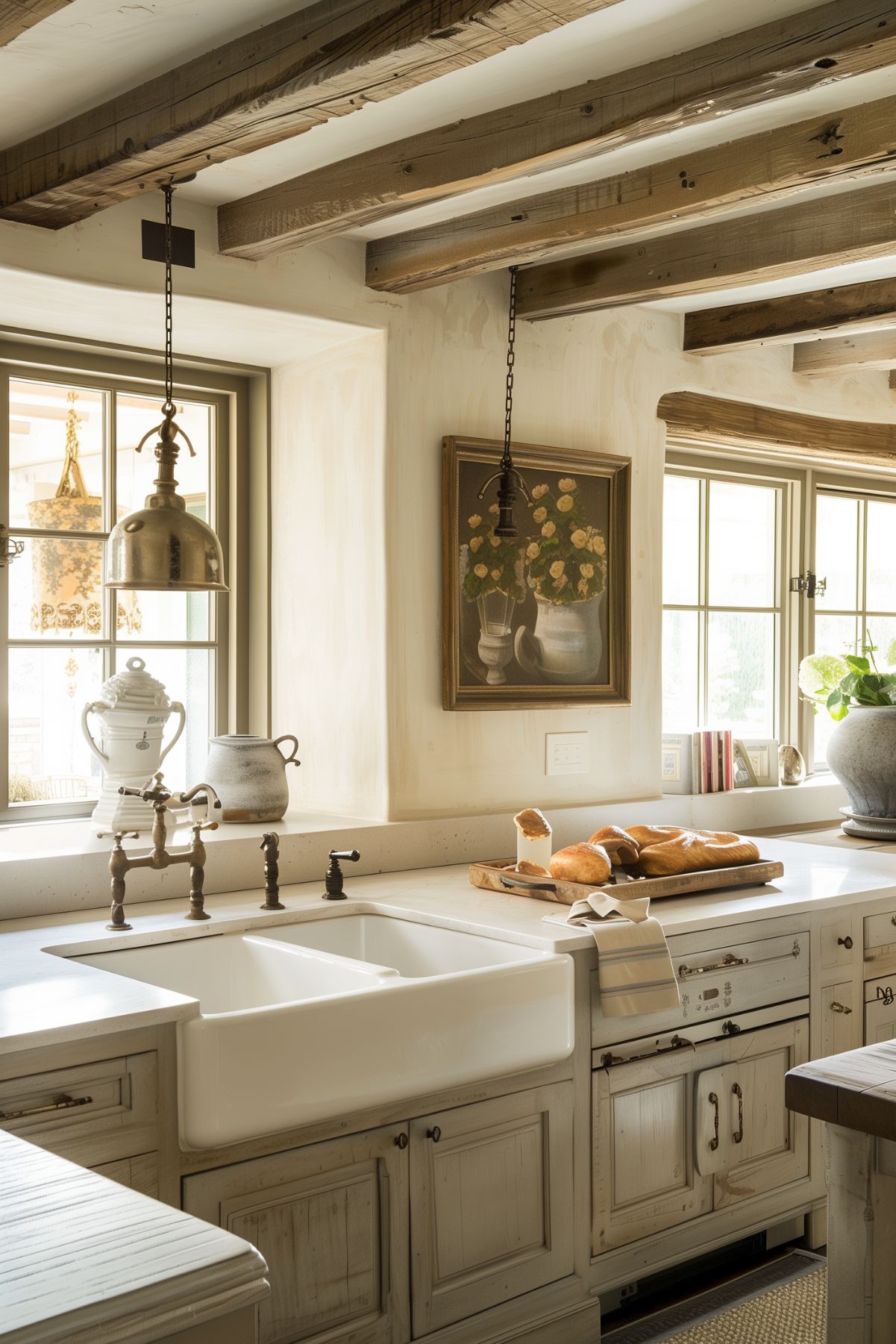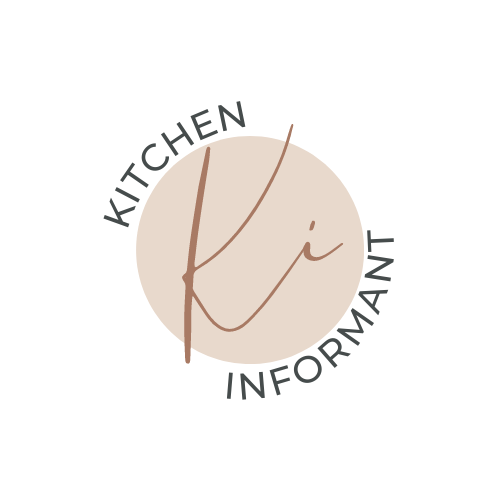When it comes to kitchen walls, choosing between paint and wallpaper can feel like a big decision. Each option comes with its own pros and cons that will impact the look and feel of the space.
For a kitchen that needs durability and easy maintenance, paint is often the better choice. Meanwhile, wallpaper adds unique character and can last for years.
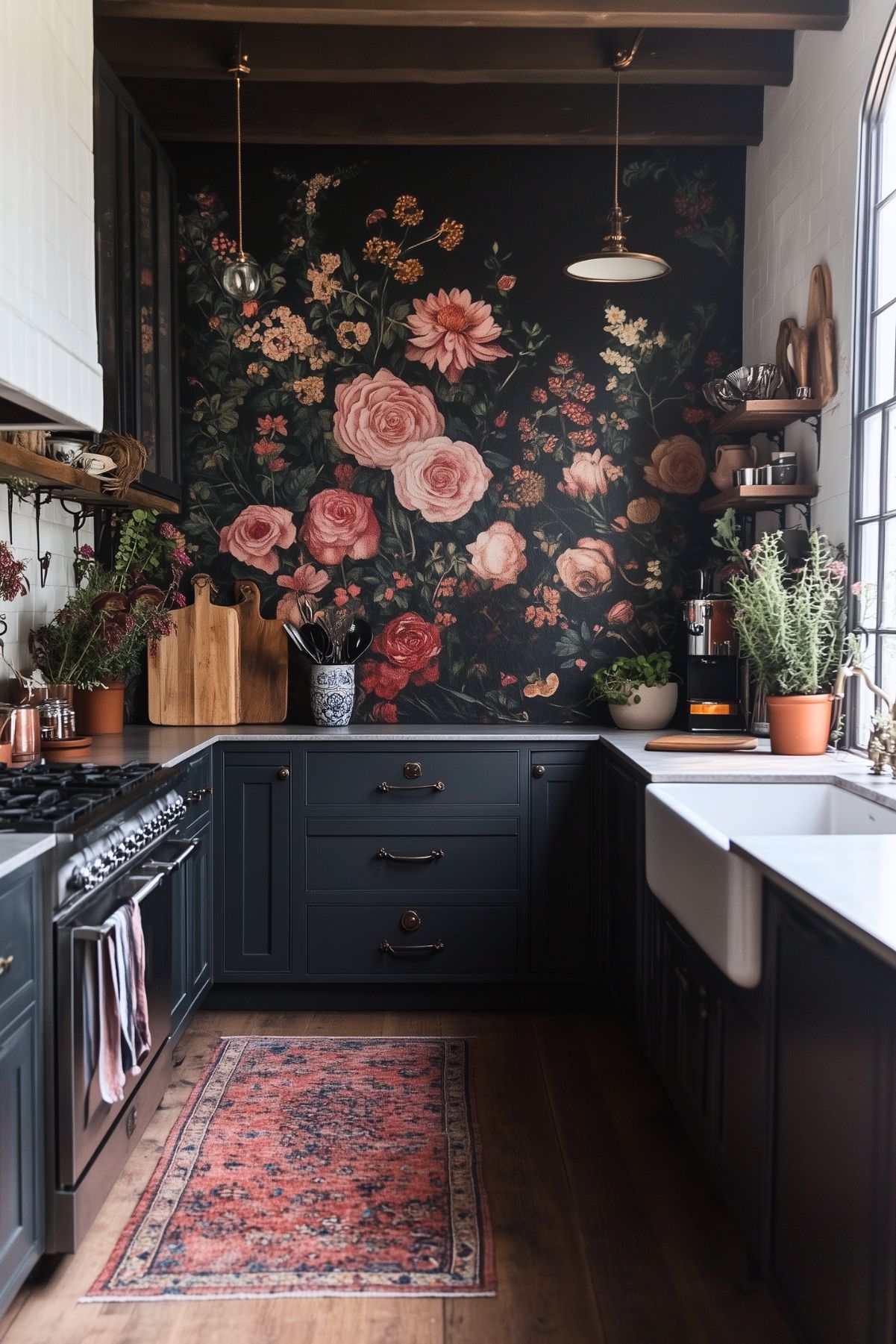
People often consider the visual appeal of each option. Paint provides a clean, smooth finish and can be easily updated, while wallpaper offers a variety of textures and patterns.
Wallpaper tends to hold up well in moist environments and can give a distinctive style, but it typically requires professional installation.
Decoding the Dilemma: Paint Versus Wallpaper

Choosing between paint and wallpaper can be tricky. Both options have unique benefits and drawbacks that can impact a kitchen’s look and feel.
Paint is often simpler and quicker to apply. It is especially good for areas that can get wet, like kitchens. A fresh coat of paint can brighten up a space and make it feel more open.
Wallpaper, on the other hand, offers endless design possibilities. It can add a luxurious touch to any room. However, installing wallpaper often requires professional help, especially in a kitchen setting.
Here’s a quick comparison:
| Feature | Paint | Wallpaper |
|---|---|---|
| Cost | Generally cheaper | Usually more expensive |
| Installation | DIY-friendly | Often needs professional help |
| Maintenance | Needs touch-ups every few years | Can last up to 15 years |
| Moisture Resistance | Good for humid areas | May peel in high moisture |
Exploring the Palette: Paint Basics

Choosing paint involves understanding various aspects, including finishes, colors, and practical benefits. Knowing these details helps in making the best choice for kitchen walls.
Varieties of Paint Finishes
Paint finishes play a key role in how walls look and feel. The main types include:
- Flat/Matte: This finish has no shine, hiding imperfections well but is harder to clean.
- Eggshell: Slightly glossy, it is durable and easy to clean, making it great for kitchens.
- Satin: Offers a smooth finish with a bit more shine, best for high-traffic areas.
- Semi-Gloss: Highly durable and easy to clean, it reflects light, perfect for trim and cabinets.
- High-Gloss: Extremely shiny, this finish creates a standout effect but shows every flaw.
Each finish offers unique advantages that cater to different styles and needs.
The Color Wheel and Kitchen Moods
Understanding the color wheel can help in creating the right mood in a kitchen.
- Warm Colors: Reds, oranges, and yellows are inviting and energizing. They work well in spaces meant for cooking and gathering.
- Cool Colors: Blues, greens, and purples promote calm and relaxation, making kitchens feel serene.
- Neutral Colors: Whites, grays, and beiges provide a timeless backdrop and allow other kitchen elements to shine.
Colors also interact with light, making it essential to test shades under different lighting conditions before deciding.
Practical Advantages of Paint
Paint offers several practical benefits for the kitchen.
- Cost-Effective: Generally cheaper than wallpaper, paint allows for easier updates.
- Ease of Application: Painting is often simpler than wallpapering, especially for DIY projects.
- Durability: Many modern paints offer resistance to moisture and stains, ideal for kitchen environments.
- Maintenance: Paint can be easily touched up or repainted, while wallpaper may require complete removal for changes.
The World of Wallpaper: A Primer

Wallpaper offers a multitude of choices and styles, making it a popular option for transforming kitchen walls. From various types to patterns, textures, and considerations for installation and longevity, understanding wallpaper can elevate any space.
Types of Wallpaper
There are several types of wallpaper available, each with its own qualities.
- Vinyl wallpaper is durable and easy to clean, making it perfect for kitchens.
- Paper wallpaper provides a softer look but may not withstand moisture as well.
- Fabric wallpaper adds texture and elegance, while peel-and-stick wallpaper can be a great DIY option for those seeking simplicity.
Each type has its pros and cons. Vinyl is best for high-traffic areas, whereas fabric can elevate the design. Choosing the right type depends greatly on the kitchen’s style and usage.
Patterns and Textures
Wallpaper patterns can significantly impact a kitchen’s aesthetic.
- Bold patterns can create a focal point, while subtle designs can offer a more relaxing atmosphere.
- Floral motifs, geometric shapes, and stripes are popular choices.
Textures also play a key role in wallpaper design. A textured wallpaper can add depth and interest. Smooth finishes offer a sleek and modern look. Combining patterns and textures enables homeowners to express their style uniquely. Choosing the right combination can completely transform the kitchen’s vibe.
Installation and Longevity
Installing wallpaper requires careful preparation. The wall should be clean, smooth, and primed for the best results.
Some homeowners opt for professional help, but others may choose to tackle it as a DIY project.
In terms of longevity, quality wallpaper can last for years. Vinyl wallpapers are particularly resilient and can stand up to moisture and wear. However, proper care is essential to maintain its appearance. Regular cleaning and avoiding harsh chemicals will help keep wallpaper looking fresh in a busy kitchen environment.
Application Techniques for Paint

Knowing the right application techniques makes a difference in achieving a smooth and even finish. Proper preparation and using the right tools are essential for a successful paint job in the kitchen.
Tools and Materials Required
To start, gather these essential tools and materials for painting.
- Paint: Choose high-quality interior paint suitable for kitchens.
- Primer: Use a primer if painting over a dark color or unfinished surfaces.
- Paintbrushes: Use angled brushes for cutting in around edges.
- Roller and Tray: A roller provides even coverage on larger surfaces.
- Drop Cloths: Protect floors and counters from spills.
- Painter’s Tape: To mask off edges and create clean lines.
- Sandpaper: For smoothing surfaces before painting.
Having everything ready ensures a seamless process and a great finish.
Step-by-Step Painting Guide
- Prepare the Area: Remove furniture and cover the countertops with drop cloths.
- Clean the Walls: Wipe down the walls to remove dust and grease.
- Repair the Surfaces: Fill in any holes or cracks with spackling paste. Sand smooth once dry.
- Tape the Edges: Apply painter’s tape along trim, cabinets, and any fixtures.
- Prime the Walls: Apply primer where necessary, especially on dry or stained surfaces. Let it dry completely.
- Cut in First: Using a brush, paint around the edges and corners where the roller won’t reach.
- Use the Roller: Load the roller with paint and start from the top. Work in sections and roll in a ‘W’ pattern for even coverage.
- Allow to Dry: Let the first coat dry. If needed, apply a second coat for the best results.
Mastering Wallpaper Application

Applying wallpaper can transform a kitchen, creating a unique and stylish look. With the right tools and a proper technique, anyone can master this skill.
Necessary Tools and Materials
Before starting, gather the essential tools and materials. Here’s what is needed:
- Wallpaper Roll: Choose a design that fits your kitchen style.
- Wallpaper Paste or Adhesive: Select the right type based on the wallpaper.
- Measuring Tape: Accurate measurement is key for a seamless fit.
- Utility Knife: Useful for cutting wallpaper to size.
- Smoothing Tool: Helps eliminate air bubbles and ensures a smooth finish.
- Paint Roller or Brush: For applying paste if needed.
- Level: Ensures precise hanging.
Detailed Wallpapering Tutorial
Follow these steps for a successful wallpaper installation:
- Preparation: Start by cleaning the walls.
- Fill any holes and cracks, and sand the surface for a smooth finish.
- Measure and Cut: Measure the height of the wall and cut the wallpaper into strips. Make sure to leave a little extra to trim later.
- Apply Paste: If using traditional wallpaper, apply paste to the back with a roller or brush.
- For peel-and-stick varieties, just peel off the backing.
- Hanging: Start from the corner or the center of the wall.
- Align the top of the wallpaper and gradually smooth it down.
- Smoothing: Use a smoothing tool to press out bubbles.
- Work from the center outward.
- Trimming: Once the strip is in place, trim the excess at the bottom and around outlets.
Maintenance: Keeping Kitchen Walls Fresh
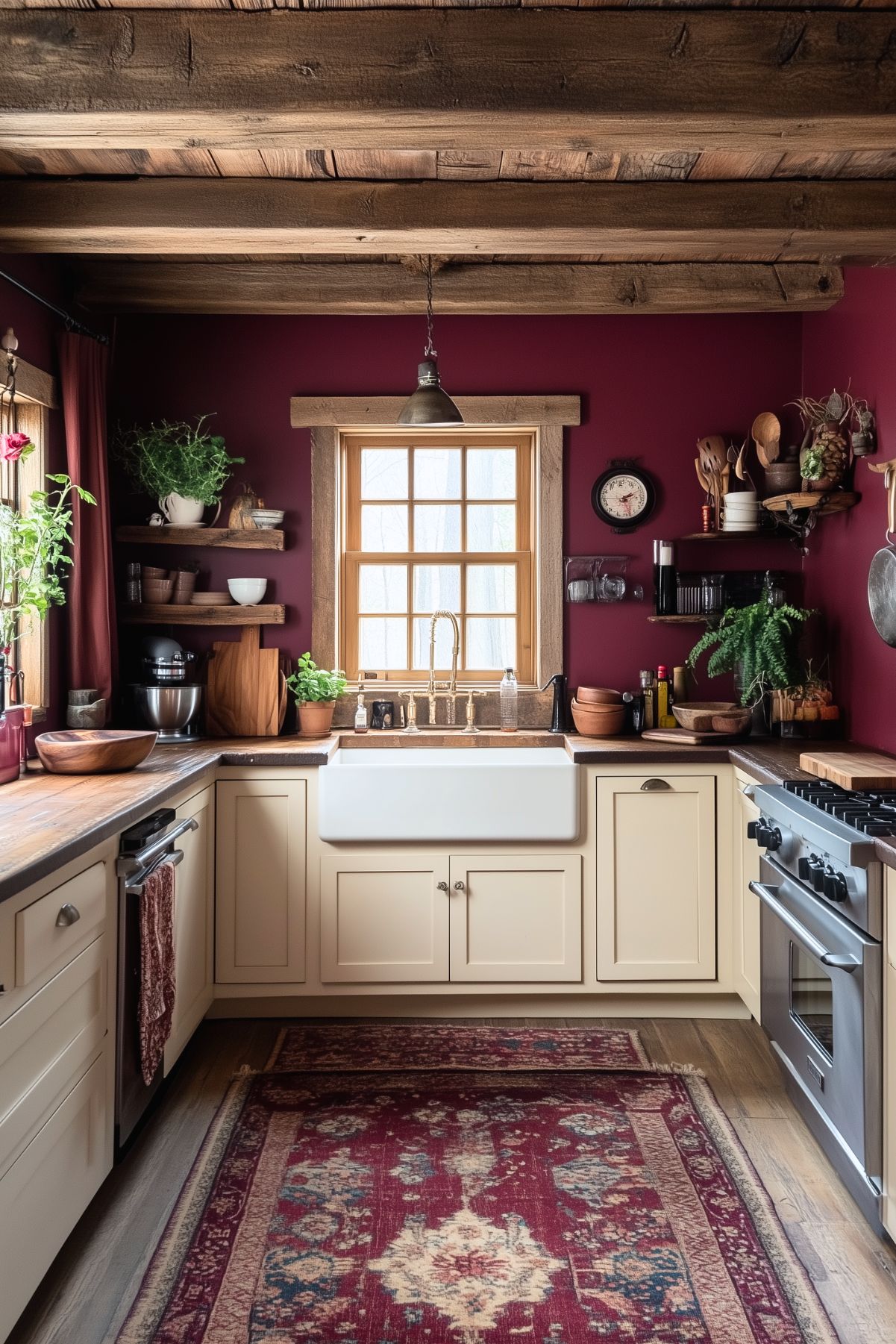
Maintaining kitchen walls is essential for keeping them looking great. Proper care helps to prevent damage, stains, and fading over time. This section will cover how to clean painted walls and tips for preserving wallpaper, ensuring a fresh and appealing kitchen space.
Cleaning and Care for Painted Walls
Painted walls can be quite easy to maintain.
- Use a soft cloth or sponge with warm, soapy water for light cleaning.
- For tougher stains, a mixture of water and vinegar can work wonders.
- Avoid abrasive cleaners, as they can damage the paint finish.
- It’s also a good idea to touch up areas when necessary, especially in high-traffic zones.
To prevent moisture damage in kitchens, it’s wise to wipe spills immediately. Checking for any peeling paint and repairing it quickly aids in prolonging the life of painted walls.
Wallpaper Preservation Tips
Taking care of wallpaper can be a bit different but just as important. Here are some key tips for preserving wallpaper in the kitchen:
- Choose wallpapers that are washable and easy to clean.
- Regularly wipe down the surface to prevent grease and grime buildup.
- Avoid harsh or abrasive cleaners, as they can scratch the surface and wear down the finish.
- Keep the humidity levels balanced to prevent peeling or bubbling.
For longevity, check frequently for any signs of damage. Repairs done early can prevent bigger issues later. Following these tips helps to keep kitchen wallpaper looking vibrant and stylish.
Creative Expressions: Personalizing Your Space
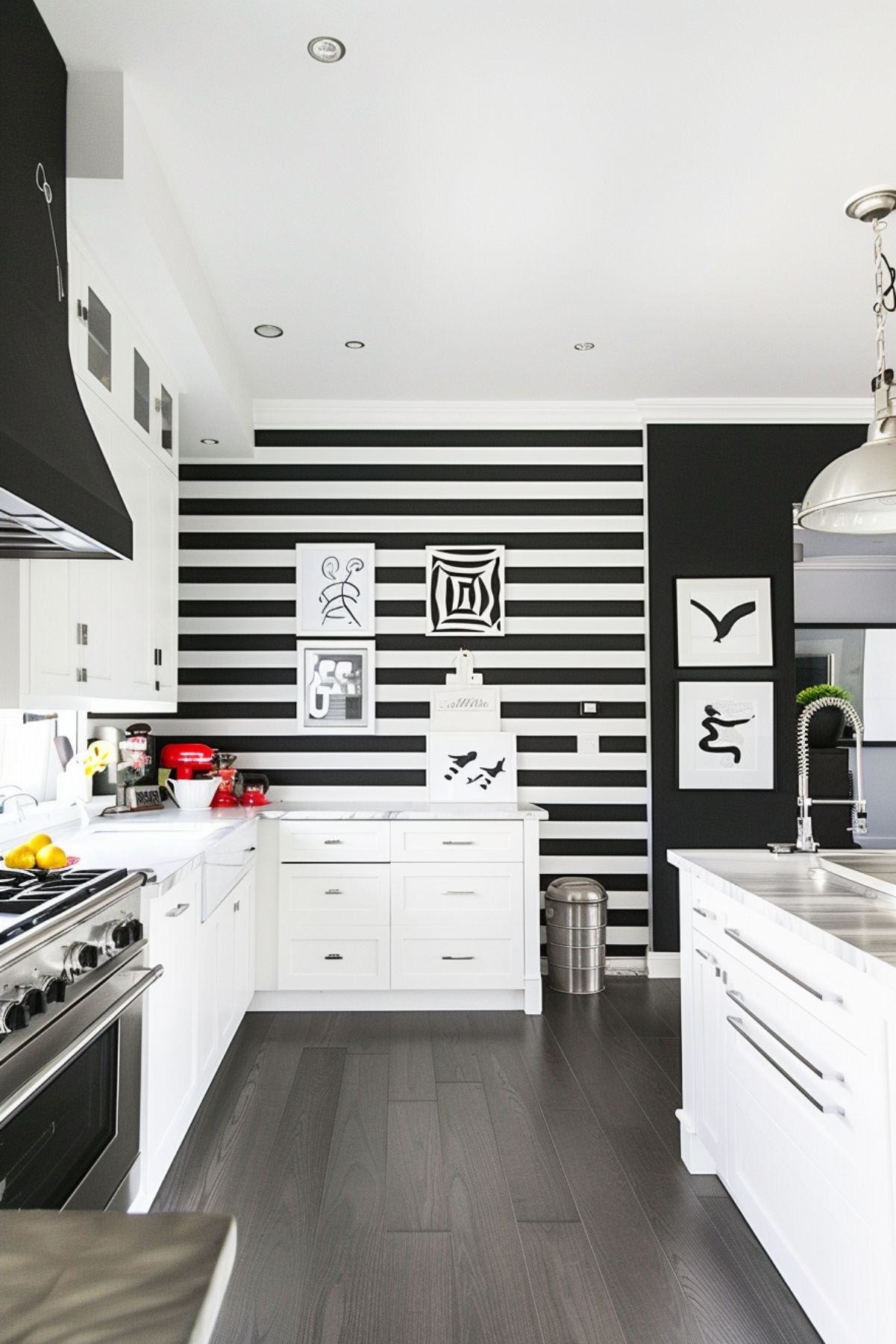
Personalizing a kitchen can transform it into a true reflection of style and taste. Two effective ways to express creativity are through accent walls with paint and using wallpaper as a decorative feature.
Accent Walls with Paint
Accent walls add a pop of color and depth to a kitchen. By choosing one wall to highlight, a homeowner can create a focal point that draws the eye. Common choices include bold colors like deep blue or vibrant red.
Using techniques like stripes or geometric patterns can elevate the design. For instance, painted chevrons or diagonals can make a wall feel dynamic.
Benefits of Accent Walls:
- Cost-effective: Less paint is needed compared to an entire room.
- Easy to change: A simple repaint can refresh the look.
Accent walls offer a playful option for those wanting to experiment with color without overwhelming the space.
Wallpaper as a Decorative Feature
Wallpaper presents an exciting way to bring unique patterns and textures into the kitchen. Unlike paint, it offers an endless selection of designs, from florals to geometric shapes.
For a modern touch, homeowners might choose a small-scale pattern or a bold design that contrasts the rest of the decor.
Advantages of Wallpaper:
- Variety: Extensive patterns and textures can suit any personal style.
- Personality: It can showcase a homeowner’s creativity and flair.
Utilizing wallpaper effectively can turn an ordinary kitchen into a space that feels custom and inviting.
Making the Decision: Factors to Consider

Choosing between paint and wallpaper for kitchen walls involves several key factors. Understanding budget, the room’s function, and lifestyle can guide the decision-making process effectively.
Budget Considerations
Cost plays a significant role in the choice between paint and wallpaper.
Paint is usually more budget-friendly than wallpaper. A gallon of paint typically ranges from $30 to $60, covering about 400 square feet.
In contrast, wallpaper installation can vary widely in price. It might cost anywhere from $250 to $1,000 per room, depending on the quality and the complexity of the installation.
Additional expenses for tools, like brushes and rollers, should also be considered when choosing paint.
There are options for every budget in both categories. With paint, it is possible to do it yourself, which saves money. Wallpaper usually requires professional help, which can add to the expense.
Assessing the Room’s Function
The kitchen is a unique environment due to moisture and cooking activities.
For areas prone to splashes, such as behind the sink or stove, paint is often the best choice. Certain paints are designed to withstand moisture and are easy to wipe clean.
Wallpaper can also be a lovely choice but may not perform as well in high-moisture areas.
If a homeowner chooses wallpaper, they should look for washable varieties that can handle kitchen conditions.
It’s essential to think about the durability needed based on how often the kitchen is used. Simple clean-up and longevity might be crucial factors for those who cook regularly.
Lifestyle and Upkeep
A homeowner’s lifestyle heavily influences the choice.
Paint requires touch-ups every few years, especially in high-traffic areas. This upkeep is typically easier and faster than dealing with wallpaper.
Wallpaper can last longer, often between 10 to 15 years. However, removal can be tricky.
This might lead to damage to the wall underneath, especially in kitchens.
If a family has pets or small children, paint might be a safer choice.
It is less likely to peel and can be easily refreshed.
Wallpaper, while beautiful, can be more delicate and may not hold up well in busy homes.









